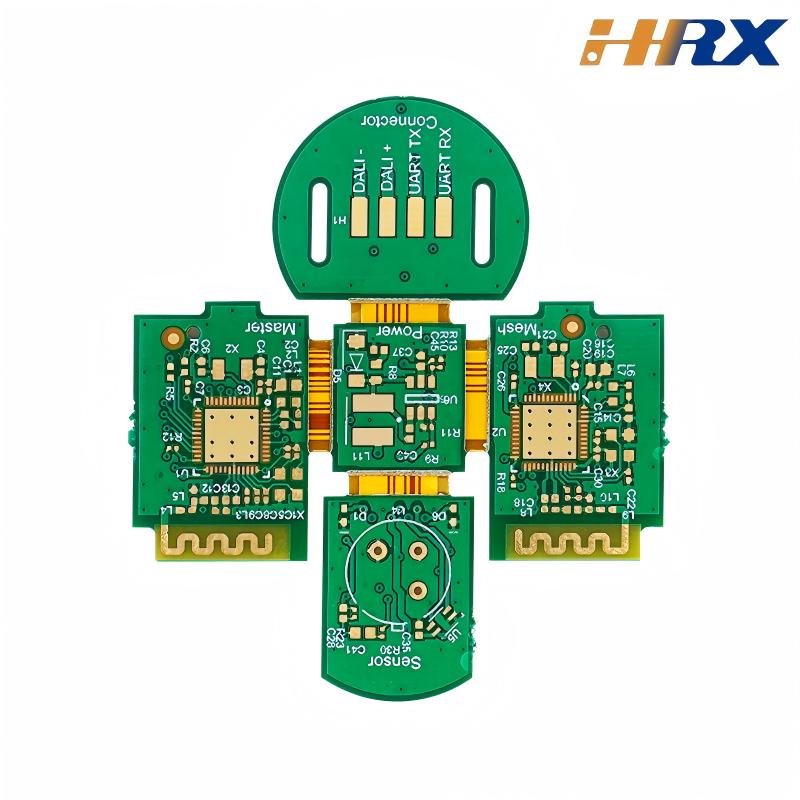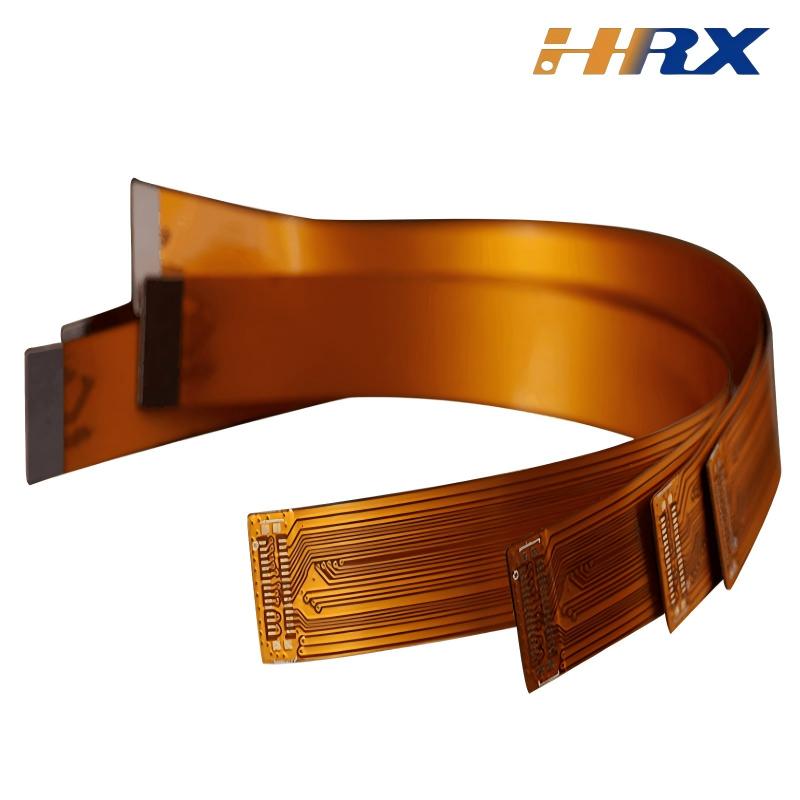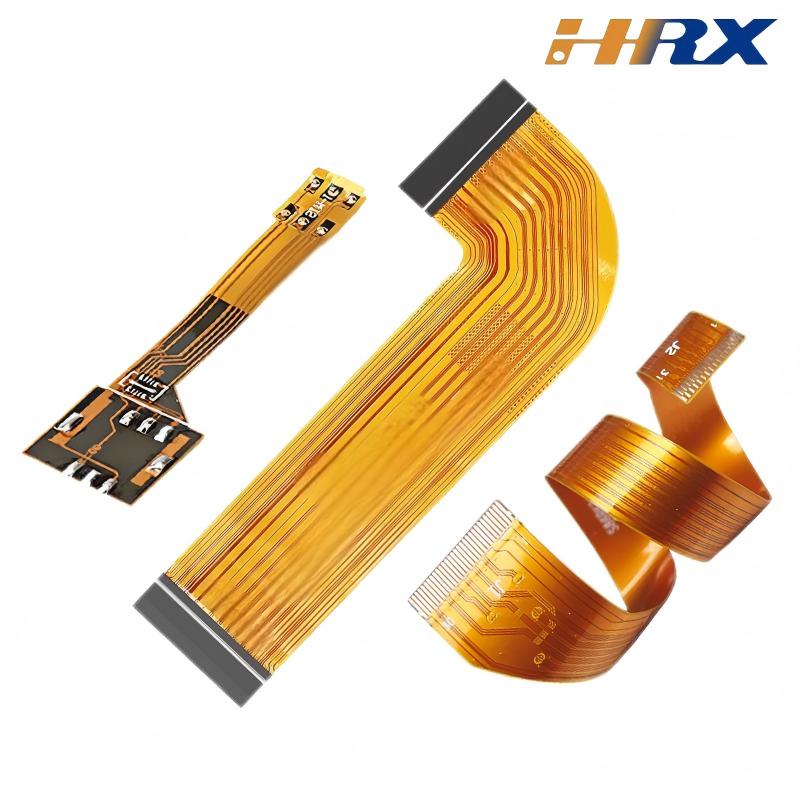Search
What Are the Key Considerations for Rigid-Flex PCB Design?
- Jun 11,2025
-
Share
In the ever-evolving landscape of electronics manufacturing, Rigid-Flex Printed Boards (RFPCBs) have emerged as a pivotal solution, especially when combined with the expertise in Flexible Printed Circuits (FPCs). As a global ODM/OEM powerhouse in FPC, PCB, and RFPCB manufacturing, Shenzhen Huaruixin Electronics Co., Ltd. is at the forefront of addressing the intricate design challenges related to bending requirements in RFPCBs.

Bending Requirements in Rigid-Flex Printed Board Design
Bend Radius Optimization
In FPC and RFPCB design, the bend radius is a critical parameter. A well-calculated bend radius ensures the integrity of the flex circuitry. For instance, in high-density FPC applications like medical endoscopes, a small bend radius (as low as 0.5mm - 1mm) might be necessary to navigate tight spaces. However, this requires advanced material selection and trace routing techniques. According to industry standards, a minimum bend radius should typically be 3 - 5 times the thickness of the FPC layer stack to avoid trace cracking and delamination. Using advanced CAD/CAM software, we at Huaruixin Electronics can precisely model and simulate bend scenarios to optimize the bend radius for each specific project.
Bending Angle and Cycling Durability
The bending angle and cycling frequency are key determinants of an RFPCB's lifespan. In foldable consumer electronics, such as smartphones, RFPCBs often endure repeated bending at 180 degrees. To ensure long-term reliability, the use of materials with high fatigue resistance, like Kapton (a type of polyimide widely used in FPCs), is essential. The concept of "bending cycles" is crucial here; high-end FPCs in automotive infotainment systems may need to withstand hundreds of thousands of bending cycles without failure. This necessitates a combination of robust material selection, proper layer adhesion, and optimized trace design.
Key Considerations in Rigid-Flex Printed Board Design
Material Selection for FPC Excellence
Flexible Dielectrics: Polyimide, the workhorse of FPC materials, offers exceptional thermal stability (up to 260°C) and chemical resistance. In high-frequency applications, Liquid Crystal Polymer (LCP) stands out for its low dielectric loss tangent (Df), making it ideal for 5G antenna modules integrated with RFPCBs. Additionally, materials like PEN (Polyethylene Naphthalate) are emerging as cost-effective alternatives for less demanding consumer FPC applications.
Conductive Layers: Electro-deposited (ED) copper and rolled annealed (RA) copper are the two main types used in FPC traces. ED copper provides a smoother surface finish, reducing signal loss in high-speed applications, while RA copper offers better flexibility and is suitable for applications with stringent bending requirements. For applications requiring EMI shielding, copper-clad laminates (CCLs) with additional shielding layers can be employed.
Advanced Layer Stack-up Engineering
The layer stack-up in RFPCBs, especially when integrating FPC sections, is a complex balancing act. A typical stack-up might include multiple dielectric layers, conductive planes, and adhesive layers. For high-speed digital signals, impedance-controlled layers are crucial. By precisely controlling the thickness of each layer and the distance between signal traces and ground planes, we can achieve the desired characteristic impedance (e.g., 50Ω or 90Ω). In addition, the use of blind and buried vias in the rigid sections can significantly reduce the overall thickness of the RFPCB, enhancing its flexibility and space-saving capabilities.
Trace Routing and Signal Integrity in FPCs
Trace routing in the flex regions of RFPCBs demands meticulous planning. Differential pair routing, a common technique in FPCs for high-speed signals, helps minimize electromagnetic interference. To prevent stress-induced trace breakage during bending, traces should follow a serpentine or meandering pattern, allowing for elongation and contraction. For power delivery, power planes in the FPC section need to be carefully designed to handle high currents while maintaining flexibility. Thermal vias can also be incorporated to dissipate heat generated by power-hungry components on the board.
Mechanical Reinforcement and Reliability Enhancement
The transition zones between rigid and flex sections are vulnerable areas. To fortify these regions, we often use stiffeners made of FR-4 or polyimide films. Stiffener placement and bonding techniques are critical; improper bonding can lead to delamination under bending stress. Additionally, overmolding with thermoplastic elastomers (TPEs) can provide additional mechanical protection, especially in harsh industrial environments. In automotive applications, where RFPCBs are exposed to vibrations and temperature fluctuations, these reinforcement methods ensure long-term reliability.
At Shenzhen Huaruixin Electronics Co., Ltd., our expertise in FPC, PCB, and RFPCB manufacturing is unparalleled. With a state-of-the-art manufacturing facility and a team of seasoned engineers, we are well-equipped to handle the most challenging projects. Whether you need custom FPCs, high-precision PCBs, or advanced RFPCBs, we have the solutions. If you have any project requirements, don't hesitate to reach out. Visit our website www.hrxfpc.com to explore more industry insights, or contact us via email at sales@hrxfpc.com. Let's collaborate to bring your innovative ideas to life with our professional manufacturing services.

Let’s talk! We’ll provide the perfect solution for you!
-
 Huaruixin Electronics mainly produces printed circuit boards as the core business, to provide customers with one-stop solutions for FPC/PCB production, components sourcing and Assembly.
Huaruixin Electronics mainly produces printed circuit boards as the core business, to provide customers with one-stop solutions for FPC/PCB production, components sourcing and Assembly. - WHAT WE DO — PCB Design Solutions — Flex PCB Production — Components Sourcing — FPC&PCB Assembly
- PRODUCTS — Single Sided Flexible Circuits — Double Sided Flexible Circuits — Multilayer Flexible Cirucits — Rigid-Flex Circuits — FPC Assembly — PCB Assembly
- CAPABILITY — FPC Capability — Rigid-Flex Capability — PCB Capability — Assembly Capability
- Copyright © 2024 Shenzhen Huaruixin Electronics Co., Ltd. All Rights Reserved.
- Design By BONTOP


